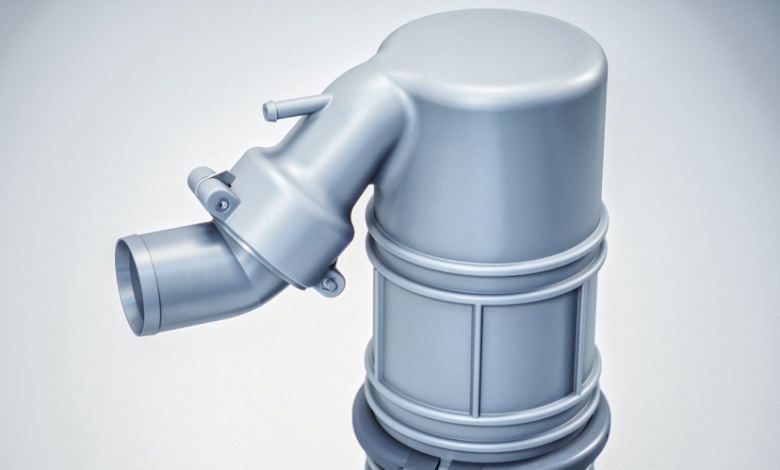Understanding the Basics of Marine Exhaust Systems: A Comprehensive Guide

Marine exhaust systems are vital components of a boat’s propulsion and power systems. They play a crucial role in ensuring that engine emissions are safely expelled from the vessel, protecting both the engine and the environment. In this comprehensive guide, we’ll dive into the basics of marine exhaust systems, explore their design and components, and provide insights into how they work to keep your marine vessel running smoothly.
What is a Marine Exhaust System?
A marine exhaust system is designed to manage and expel the gases produced by an engine’s combustion process. Unlike automotive exhaust systems, marine exhaust systems must deal with unique challenges, such as high moisture content and the corrosive nature of seawater. Proper marine exhaust design ensures that these gases are directed away from the engine and the crew, minimizing noise and reducing the risk of dangerous fumes entering the vessel.
Key Components of Marine Exhaust Systems
Understanding the key components of marine exhaust systems helps in appreciating how they function effectively. Here are the main components you’ll find in most marine exhaust systems:
- Exhaust Manifold: This component collects exhaust gases from multiple cylinders and directs them to the exhaust system. In marine engines, exhaust manifolds are usually water-cooled to prevent overheating.
- Elbow: The elbow is a curved piece that connects the exhaust manifold to the exhaust pipe. It helps in redirecting the exhaust gases from the manifold to the exhaust pipe while minimizing back pressure.
- Exhaust Pipe: This pipe carries exhaust gases from the engine to the exit point. Marine exhaust pipes are typically made from stainless steel or other corrosion-resistant materials to withstand the harsh marine environment.
- Muffler: The muffler reduces noise produced by the engine. In marine exhaust systems, mufflers are designed to handle high volumes of water and exhaust gases without degrading performance.
- Water Injection System: This system injects water into the exhaust gases to cool them before they exit the boat. This helps in reducing engine temperatures and prevents overheating.
- Tailpipe: The tailpipe expels exhaust gases out of the vessel. It is usually positioned above the waterline to ensure that exhaust gases are safely released without creating a backdraft into the engine compartment.
How Marine Exhaust Systems Work
Marine exhaust systems function by channeling exhaust gases away from the engine and expelling them through the tailpipe. Here’s a step-by-step look at how these systems operate:
- Exhaust Gas Collection: Exhaust gases produced by the engine are collected by the exhaust manifold. The manifold is designed to handle high temperatures and pressures while directing gases efficiently.
- Cooling and Redirection: The gases then pass through the elbow, which redirects them towards the exhaust pipe. During this stage, the marine exhaust design incorporates cooling methods, such as water cooling, to manage the heat generated.
- Noise Reduction: The exhaust gases travel through the muffler, where sound-dampening materials and designs reduce the noise generated by the engine. This is crucial for maintaining a quieter and more enjoyable boating experience.
- Water Injection: In many marine exhaust systems, water is injected into the exhaust stream to cool the gases further. This step is vital for preventing overheating and ensuring that the exhaust gases are expelled safely.
- Exhaust Gas Expulsion: Finally, the cooled and muffled exhaust gases exit the vessel through the tailpipe. The tailpipe is positioned to ensure that gases are expelled above the waterline, preventing any backdraft into the engine compartment.
Importance of Proper Marine Exhaust Design
Marine exhaust design is crucial for several reasons:
- Engine Protection: A well-designed exhaust system helps in maintaining optimal engine temperatures, preventing overheating, and reducing the risk of engine damage. Proper cooling and efficient gas expulsion are essential for engine longevity.
- Crew Safety: By directing exhaust gases away from the engine compartment and crew area, the marine exhaust system ensures that harmful fumes do not pose a danger to those on board.
- Environmental Impact: Marine exhaust systems are designed to minimize emissions and reduce environmental impact. Efficient exhaust management helps in complying with regulations and protecting marine ecosystems.
- Noise Reduction: Effective muffling and noise reduction enhance the overall boating experience. A quieter exhaust system contributes to a more pleasant environment for both the crew and nearby marine life.
Maintenance and Troubleshooting
Regular maintenance is essential for keeping marine exhaust systems in good working condition. Here are some tips for maintaining and troubleshooting your marine exhaust system:
- Routine Inspections: Regularly inspect the exhaust components for signs of wear, corrosion, or damage. Pay particular attention to the exhaust manifold, elbow, and pipes.
- Check for Leaks: Look for any signs of exhaust gas leaks, which can indicate a problem with the exhaust system. Leaks can lead to engine damage and safety hazards.
- Clean and Replace Components: Keep the exhaust system clean and replace any worn or damaged parts. This includes cleaning the muffler and checking the water injection system for proper operation.
- Monitor Engine Performance: Pay attention to any changes in engine performance, such as unusual noises or overheating. These could be signs of a problem with the exhaust system that needs addressing.
- Consult a Professional: If you’re unsure about any aspect of your marine exhaust system, consult a marine mechanic or exhaust specialist. They can provide expert advice and perform any necessary repairs or maintenance.
Conclusion
Understanding the basics of marine exhaust systems is essential for every boat owner and operator. A well-designed marine exhaust system ensures engine protection, crew safety, and environmental compliance. By familiarizing yourself with the key components and functions of marine exhaust systems, you can maintain and troubleshoot your system effectively, ensuring smooth and safe operation of your vessel. If you’re looking to optimize your marine exhaust design, consider consulting with experts to tailor the system to your specific needs and boating conditions.


